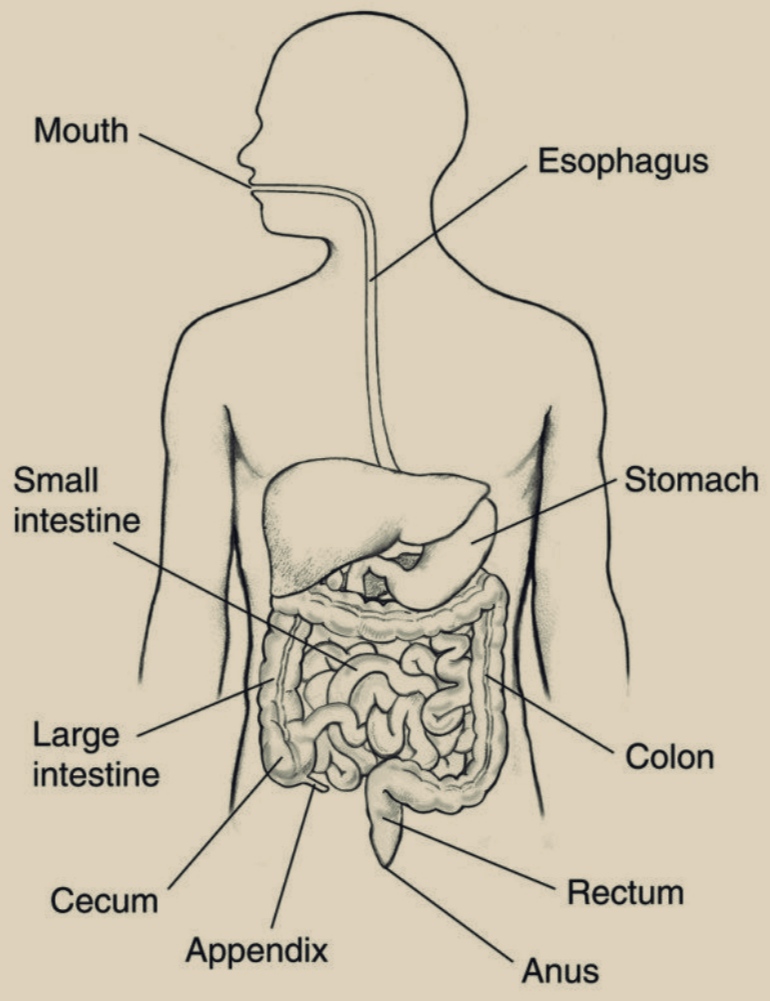Table of Contents
What is Human Digestive System?
Human digestive system used in the human body for the process of digestion. The human digestive system consists primarily of the digestive tract, or the series of structures and organs through which food and liquids pass during their processing into forms absorbable into the bloodstream.
The system also consists of the structures through which wastes pass in the process of elimination and other organs that contribute juices necessary for the digestive process.
Some parts of nervous and circulatory systems also play a significant role in the digestion process. A combination of nerves, bacteria, hormones, blood and other organs of the digestive system completes the task of digestion.
The digestive system includes the mouth, Esophagus, stomach, small intestine, large intestine, rectum, and anus. It also includes the salivary glands, liver, gallbladder, and pancreas, which make digestive juices and enzymes that help the body digest food and liquids.
Diagram of the Human Digestive System
The diagram given below represents different parts of the human digestive system that convert food into essential nutrients absorbed by the body.

Parts of the Human Digestive System
The digestive system of the human body comprises a group of organs that work together in converting food into energy and other basic nutrients to power the body. The food we take in is digested and utilised by our body, and the unused parts of the food are defecated.
1. Mouth
Food starts its journey from the mouth or the oral cavity. There are many other organs that contribute to the digestion process, including teeth, salivary glands, and tongue. Teeth are designed for grinding food particles into small pieces and are moistened with saliva before the tongue pushes the food into the pharynx.
2. Esophagus
The oesophagus is a branch of the throat. The oesophagus transports food from the mouth to the stomach.
3. Stomach
The stomach is a muscular organ that stores food and also works as a mixer and grinder. Acid and powerful enzymes are secreted by the stomach, which helps to break down the food.
The stomach is a hollow container in the digestive system labeled diagram, and it holds the food that gets passed down from the esophagus. This is where the food gets mixed with the enzymes in the stomach. The enzyme breaks the food down into a form that can be used.
There are cells in the stomach lining that secrete a powerful and strong acidic enzyme that is responsible for breaking down the food. When the food contents in the stomach get processed, then these get released and move to the small intestine.
4. Small Intestine
The small intestine is a long, slender, and coiled structure that resembles a tube. In adults it is around 6.25 metres in length.
5. Large Intestine
This is a thick, long tube measuring around 5 feet in length. It is present just beneath the stomach and wraps over the superior and lateral edges of the small intestine. It absorbs water and consists of bacteria (symbiotic) that support the breakdown of wastes to fetch small nutrients.
6. Rectum
The rectum is 8-inch long and straight, and it connects the colon to the anus. The rectum receives the stool, and it holds on to it until the process of evacuation.
7. Anus
The anus is the final part of the digestive tract, which is 2 inches in length. The lining in the upper anus detects any content in the rectal. The anus has the sphincter muscles that let you control the stool. When there is an urge to go to the bathroom, the external sphincter holds on to the stool till you reach the bathroom where it relaxes and releases the contents.
Function of Human Digestive System
The four main functions of the digestive system are:
- Mixing and movement of food and wastes through the body.
- Digestion of food into smaller pieces.
- Absorption of nutrients.
- Excretion indigestible of wastes.
